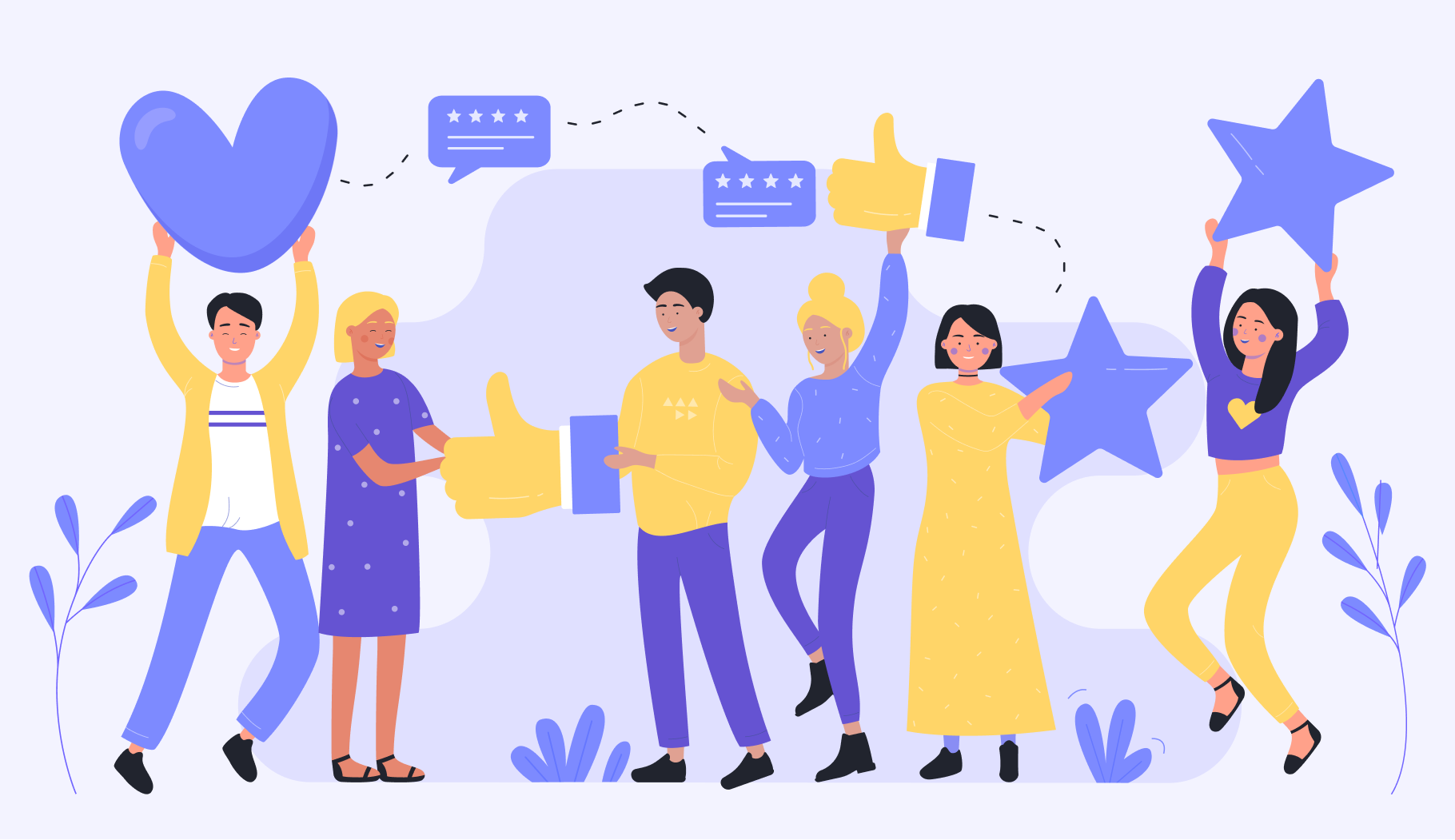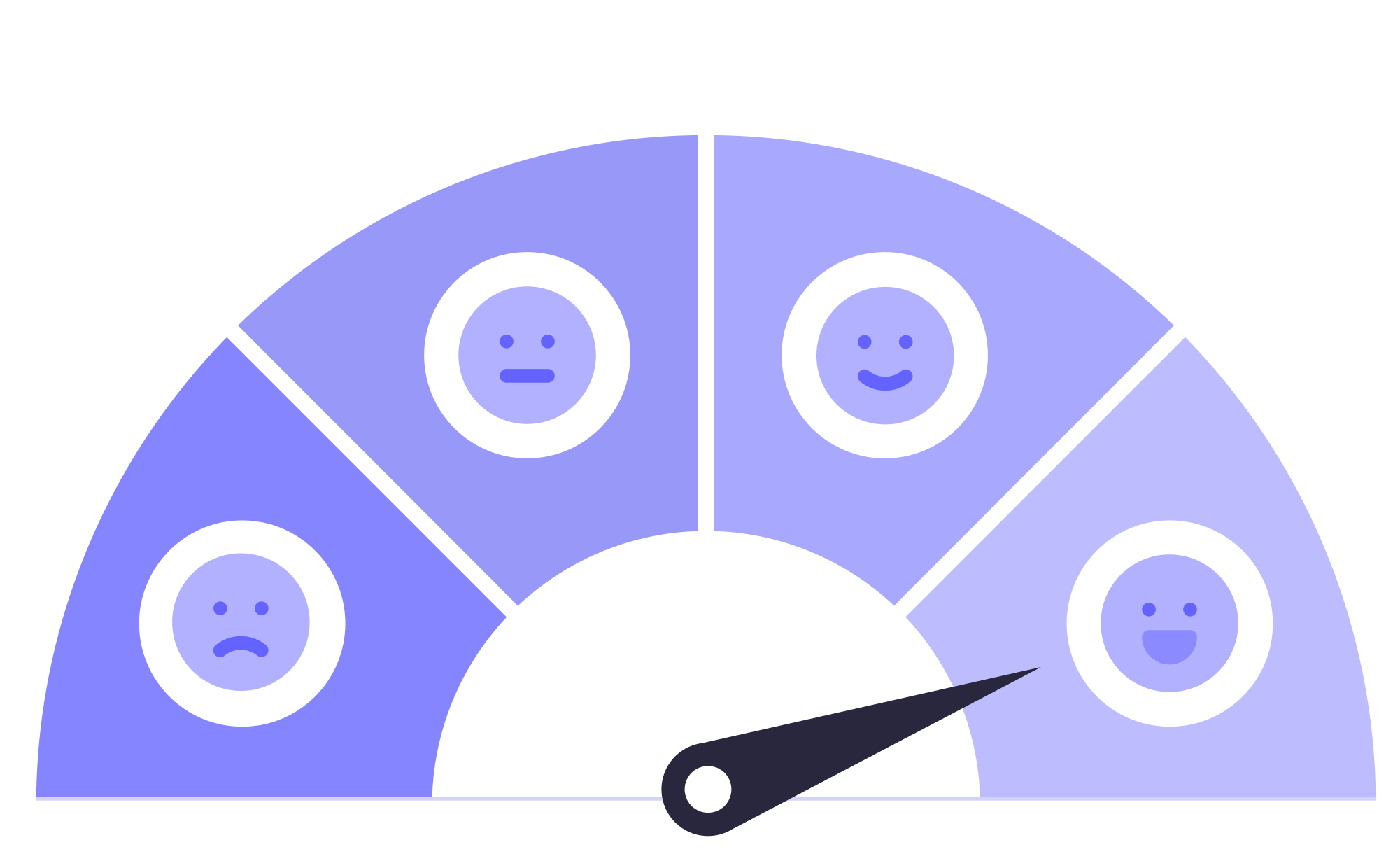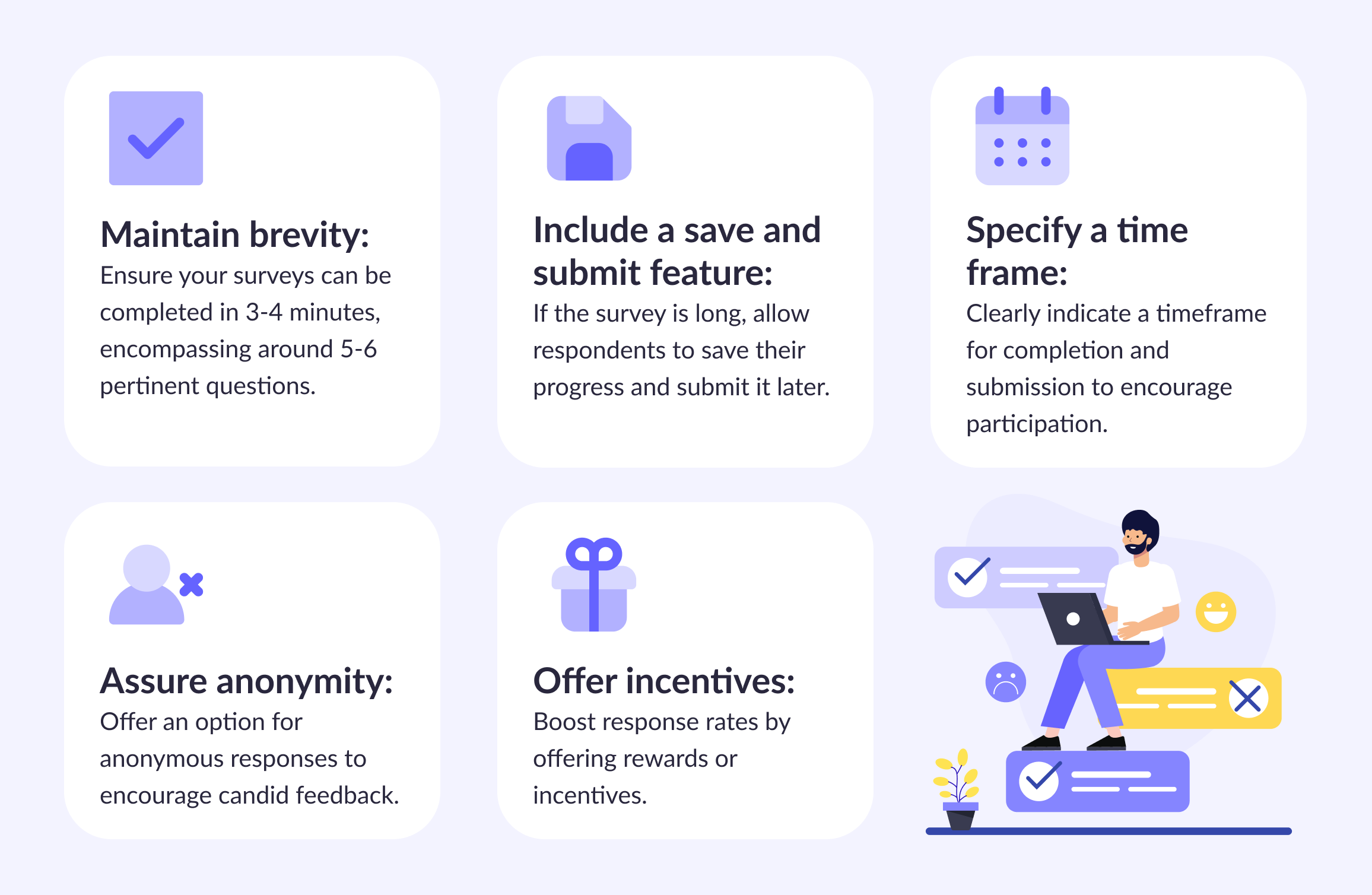Customers experience (CX) refers to the overall impression a customer has of a company or brand based on all interactions with the company, from pre-purchase research to post-purchase evaluation. This includes the customer's emotions, beliefs, and perceptions about the company and its products and services, as well as the customer's satisfaction with the purchase process and outcome. CX is an important factor in customer loyalty and repeats business, and companies invest in CX improvement to increase customer satisfaction and engagement.
In This Article:
What Is Customer Experience?

Customer experience products and services and get impressions that result in feedback and recommendations like word of mouth, retention, repetitive sales, and loyal customers with increased lifecycle value. All of these can drive growth and profitability, which is the bottom line of any commercial company.
Customer experience is an old science that serves online businesses and products in the form of user experience. But depending on the business experience you provide can be not just about a website or a software application but the service behind it, the value it serves, the personnel involved, and connections with other software, hardware, and other businesses. The view should always be holistic.
Customer experience is everything that impacts your customers from the point of the first discovery of your business until the last point of contact for sale is made.
Customer experience is an integral measure that can be calculated on positive and negative sales experiences.
Customer experience consists of the following areas:
- Initial awareness
- First interaction
- Surfing
- Purchase
- Post-purchase
- Customer service
Think like a Customer: Customer Journey
The customer's point of view is the one and only way to analyze sales and experience and find proper ways to improve.
A customer journey is the series of interactions and experiences that a customer goes through when engaging with a company or brand, from initial awareness to post-purchase evaluation. It includes all touchpoints that the customer has with the company, such as browsing the company's website, speaking with customer service, using a product or service, and providing feedback. The customer journey map is a visual representation of the customer's journey and helps companies understand the customer's needs, pain points, and expectations at each stage, allowing them to optimize the customer experience on a website and improve customer satisfaction.
The customer journey provides a roadmap for companies to understand the customer's experience at each step and identify opportunities to improve it. By optimizing the customer journey, companies can enhance the website customer experience and create more positive and memorable interactions.
Let's navigate the future together!
Transform your business landscape with our expert-led Digital Transformation services — we are ready to enhance customer experiences and propel you into a new era of success.
E-commerce example
Let's take a look at a typical e-commerce business and draw a map for it:

Entering the website
The very first and main impression (after the initial advertising or Google search results item) goes from your website, so that's where the experience gets started. Imagine that your customer visited it. Answer the following questions:
- What did they feel after entering it?
- How do they see the website loaded?
- What were the first items on the website that had their attention?
- What did they discover to see or do next?
- How easy was their navigation?
Surfing and shopping
This might be a main function for a customer - searching, exploring, and selecting items:
- How well is navigation?
- Does the customer feel a broad range of options?
- Are the items well-looking?
- Are the descriptions complete and accurate?
- Does the customer perceive prices and discounts?
- Can the customer easily reach the policies of payments, shipping, exchange, cancellation, returns, and warranty?
- Could the customer contact someone to help with the assortment or any other questions?
- How quickly could they get to the purchase phase?
Cart & Checkout
A purchase phase. Here, it is important to supply customer satisfaction starting from cart fulfillment and management, payment & shipment options:
- Is the cart flexible in terms of deleting positions or changing their item numbers?
- What shipment options are available?
- What payment options are covered, and how easy is paying with them?
- Are the payments secure?
- Can user select packaging that fits their order?
Post Order Handling
- Will the customer get a confirmation notice?
- Can the customer track the orders they made?
- Will the shipping be on time?
After-Sales Service
Depending on the business model, customers may require various support related to maintenance and issue-handling with the goods/services they already purchased:
- How quickly does the customer get support if something goes wrong?
- Can the customer contact the company for a product features consultation?
- Will the customer get the updates for the product they bought?
- Will the customer get informed on new versions of the products they purchased?
Note that questions were asked and items were listed during the customer journey mapping depending not just on the website but your software and operations behind it, e.g.:
- When a customer views the items, we could provide the actual number of items available in stock to be sure that the customer can order them right during this session and won't be disappointed in the future.
- When the customer wants to ship the item in a selected way, indeed, we need to provide that option
- When the customer expects the shipping on time, it should be on time, and it could primarily depend on the shipping method or providers you use — not just the website software.
Operational excellence is essential and must support content on the website, product, or service features. Software development should understand business needs in every day activities and cover the most essential ones.
Charm the Customer
Understanding general customer behavior patterns is crucial to getting things done right.
Customer satisfaction

Let's discuss customer satisfaction first. The four general levels of customer satisfaction are:
- Delighted: This is the highest level of customer satisfaction and occurs when a customer is extremely satisfied with a product or service and has a positive emotional connection with the company. Customers delighted with their experience are more likely to become repeat customers and recommend the company to others.
- Satisfied: This is the level where customers are satisfied with the product or service and do not have any significant complaints. They are more likely to continue doing business with the company and may make repeat purchases.
- Dissatisfied: This is the level where customers are dissatisfied with the product or service and have negative emotions about the company. They may express their complaints and may choose not to do business with the company again.
- Furious: This is the lowest level of customer satisfaction and occurs when customers have a very negative experience with the company and are extremely unhappy with the product or service. They are likely to spread negative word-of-mouth and may take legal action against the company.
The main difference between delighted and satisfied customers is profitability levels and lifetime value. A similar contrast is between furious and dissatisfied customers but in the way of losing sales and customers.
Switching behavior
Why would the customer switch to your product or service if the customer already uses that of others? Unique propositions? Fresh design? Usually customers have their barriers like the following:
- Financial barriers: These can include the cost of switching to a new product or service, such as the cost of acquiring a new product or the cost of terminating a contract with a current provider. For example, to buy on a new website, the customer has to leave the discount programs, so you need to appeal to them more than they already have. Or, they purchased a subscription for a year, so you have nothing to do right now, but you could try to fight for that customer in the future, so get prepared to keep them informed of your existence and propositions.
- Psychological barriers can include an emotional attachment to a current product or service, the fear of change, or the perception that the current product or service is familiar and reliable. That is why a website or product design should have an intuitive UI so the new customers will be onboard and act naturally and conveniently.
- Logistical barriers can include the difficulty of switching to a new product or service, such as the time and effort required to transfer data or the need to retrain employees. If your website, product, or service depends on the core customer's location or physical shipping, try to cover that.
- Technical barriers can include compatibility issues with existing systems or processes, the need for new hardware or software, or the difficulty of integrating the new product or service with existing systems or transferring to them. This is why Samsung suggests Smart Switch functionality to easily transfer all data from the most popular phones on the market, or Figma suggests an import feature to convert Sketch mock-ups to their software.


Thank you for Subscription!
From concepts to actions. Practical CX recommendations
Here is what you can do commonly for your website, software product, or online service to improve the experience of your customers.
Pages loading
Page and content loading speed has a significant impact on customer conversion because it affects the customer's experience online. A slow-loading content can lead to increased bounce rates, decreased customer engagement, and lower conversion rates.
Studies have shown that even a small delay in page loading time can noticeably impact conversion. For example, a study by Amazon found that a 100-millisecond delay in page load time resulted in a 1% decrease in sales. Another study by Google found that 53% of mobile site visits were abandoned if a page took longer than 3 seconds to load.
These examples demonstrate the importance of page loading speed in optimizing the customer experience and driving conversion. Business owners should prioritize website performance and invest in technology and infrastructure to ensure fast page loading times and improve the website customer experience.
Ways to increase page and content loading:
Optimize images: Large, unoptimized images can slow down page loading times. Compress images and reduce their file sizes to improve page loading speed.
Use a content delivery network (CDN): CDNs can reduce the distance between the website and the user, improving page loading speed.
Minimize HTTP requests: The more HTTP requests a website makes, the slower it will load. Minimize the number of requests by combining files and reducing the number of elements on a page.
Enable browser caching: Caching allows a browser to store frequently used elements of a website, reducing the need to load them each time the user visits the site.
Minimize the use of plugins: Plugins can slow down page loading times, so only use those that are necessary for the website's functionality.
Use a fast and reliable web host: A slow or unreliable web host can significantly impact page loading times. Choose a fast and reliable web host to improve page loading speed.
Implement lazy loading: Lazy loading allows page elements to load only when needed, reducing the number of elements that need to be loaded at once.

Find out more
16 Best Techniques For Creating A User-Friendly Interface
Explore innovative strategies that elevate user engagement and redefine the art of digital interaction.
Read the articleCross-device friendliness
Consider the devices your customers could use to open your website, buy your product, or use your service. There are three most common ways:
Compatibility with major browsers. First, it ensures that the widest possible audience can access and conveniently use a website.
Responsive design. It creates a seamless and optimal user experience, regardless of the device or screen size being used. With responsive design, a website's layout and content are fluid, adapting to the size of the screen, and the elements on the page rearrange themselves accordingly. This allows the website to be easily viewed and used on any device, including desktops, laptops, tablets, and smartphones.
Mobile and native device apps. There are several reasons why a company might choose to use a mobile app instead of (or in addition to) a website:
Increased convenience: Mobile apps can be easily accessed from a user's smartphone or tablet, allowing them to quickly and conveniently engage with a company or brand.
Better engagement: Mobile apps often offer a more immersive and interactive experience compared to a website, which can help increase engagement and build brand loyalty.
Personalized experience: Mobile apps can use device capabilities, such as GPS and push notifications, to provide a more personalized and tailored experience for the user.
Offline functionality: Many mobile apps can be used offline, providing a more seamless and convenient experience for the user.
Improved performance: Mobile apps are designed to run on a specific platform and can be optimized for performance, providing a faster and smoother experience compared to a website.
User-friendly design
It is essential for the customer, from the first sight to the whole journey end, how everything is designed and organized. With the goal of making it easy and intuitive for users to navigate and use, here are several ways to improve:
Simplify the layout: Use a clean and simple layout, with a clear hierarchy of information and minimal clutter, to make it easy for users to find what they are looking for and understand the information being presented.
Make it visually appealing: Use visual elements, such as images and videos, to break up text and make the website more engaging and visually appealing.
Improve navigation: Use clear and intuitive navigation, with clearly labeled categories and links, to help users find what they are looking for quickly and easily.
Ensure consistency: Ensure that the design is consistent throughout the website, with a consistent use of color, font, and imagery.
Personalized content
Personalized content, such as recommended products or personalized recommendations, can improve the user experience by providing relevant and useful information, retaining customers' consideration of the products or services more and more:
Relevance: By presenting users with content that is tailored to their interests and needs, businesses can ensure that the content is more relevant to the user, improving their experience and keeping them engaged.
Increased engagement: Personalized content can increase user engagement by making the experience more relevant and appealing and encouraging users to interact with the content and the brand.
Improved conversion rates: By presenting users with content that is tailored to their interests and needs, businesses can improve conversion rates, as users are more likely to take action when the content is relevant to them.

More on the topic
Smart And Essential Ways To Use The Internet Of Behavior In Retail
From intelligent recommendations to dynamic engagement, discover how IoB is reshaping the way retailers connect with consumers
Explore nowConsiderations for a shopping experience
Expept items mentioned above, the improving website customer experience in shopping can be achieved through a combination of tactics and technologies, including:
Product information: Provide comprehensive and accurate product information, including product specifications, images, and customer reviews, to help customers make informed purchasing decisions.
Fast and efficient checkout process: Streamline the checkout process to make it fast, efficient, and as frictionless as possible, reducing the risk of shopping cart abandonment.
Delivery options: Offer a range of delivery options, including next-day delivery, same-day delivery, and in-store pickup, to give customers the flexibility and convenience they need.
Returns and exchanges: Make the returns and exchanges process as easy and stress-free as possible to encourage customers to shop with confidence and make repeat purchases.
Customer service: Offer excellent customer service, including fast response times, knowledgeable staff, and easy-to-use contact channels, to help customers quickly resolve any issues they may encounter.
There are always ways to improve. Make sure your core customers get the top-level experience, expand the customer segments, and try to satisfy their expectations afterward. Always look for innovative ways to represent yourself in front of others, to compete, and to make customers switch to your business.
Support the Relations — Work with Their Feedback
In the dynamic landscape of customer experience, it's imperative to actively engage in working with feedback. This isn't merely a beneficial practice but a vital one. It involves not only garnering insights from various customer segments — be they long-term loyalists, newcomers, or even past patrons — but also fostering a culture that cherishes and utilizes feedback as a cornerstone for growth and enhancement.
Embrace feedback as a gift
Remember, unhappy customers often provide the most critical feedback. As highlighted in the insightful book "A Complaint Is a Gift: Recovering Customer Loyalty When Things Go Wrong" by Janelle Barlow and Claus Moller, complaints should be viewed as opportunities to build stronger bonds with customers. They emphasize that a complaint is indeed a gift, a chance to rectify issues and demonstrate that you value your customers' opinions and experiences.
Harness tools and techniques for feedback collection
Dive deep into the world of feedback collection with a diverse array of methods. From formal channels such as phone or personal interviews, surveys, and focus groups to services that facilitate solicited feedback, you have a plethora of avenues to explore. Do so to tap into the pulse of your customer base effectively. Leverage your CRM database to garner feedback across the spectrum of your customer base. Implement the NPS survey, with a scale ranging from 0 to 10, as a straightforward yet powerful way to gauge the likelihood of your product being recommended by customers to others. This survey categorizes respondents into Promoters (9-10), Passives (7-8), and Detractors (0-6), allowing you to calculate a net score and gain deeper insights into customer loyalty and satisfaction.
Craft effective surveys

When it comes to crafting surveys, follow these guidelines to enhance their efficacy:
Maintain Brevity: Ensure your surveys can be completed in 3-4 minutes, encompassing around 5-6 pertinent questions.
Specify a time frame: Clearly indicate a timeframe for completion and submission to encourage participation.
Assure Anonymity: Offer an option for anonymous responses to encourage candid feedback.
Include a Save and Submit Feature: If the survey is long, allow respondents to save their progress and submit it later.
Offer Incentives: Boost response rates by offering rewards or incentives.
Respond to feedback
Feedback management doesn't end at collection. Make it a practice to respond to reviews and feedback, whether on platforms you control, like your website and social media or public platforms. This is not just a strategy but a potent marketing tool capable of reinforcing positive customer experiences and prompting referrals or repeat business.
Adopt the 3Ps principle when responding to reviews:
Be Prompt: Respond swiftly, showing that you value their input.
Be Personal: Personalize your responses by mentioning their name and referencing specific details from their experience.
Be Professional: Maintain a professional tone, irrespective of the nature of the feedback.
Remember, maintaining a prompt, personal, and professional approach in responding to both positive and negative feedback not only fosters a constructive and respectful dialogue with your customers but also serves as a vital tool in enhancing customer experience and unlocking new avenues for business growth and opportunities.
Do you need some advice?
Our Digital Transformation Consulting services turn challenges into victories. Ready to transform?
Conclusion
Understanding and enhancing customer experience is paramount in the dynamic online business world. From the initial interaction on a well-designed website to the intricacies of cart and checkout processes, every step matters in crafting a memorable journey for the customer.
Navigating through the essential stages of e-commerce, we emphasized the importance of a user-friendly design and personalized content that resonates with the audience. The article also highlighted the pivotal role of feedback, encouraging businesses to embrace it as a gift, a tool for growth and improvement.
A significant tool in this endeavor is the customer journey map, a valuable asset in modeling and creating customer experiences. It serves as a roadmap, helping businesses to visualize and understand the various touchpoints a customer interacts with, thereby allowing for a more nuanced and effective approach to customer satisfaction.
Moreover, customer satisfaction is not just about meeting needs but charming the customer, creating a bond that encourages loyalty and positive switching behavior. By adopting the strategies and recommendations outlined in this article, businesses can foster relations that not only support growth but also cultivate a community of satisfied and engaged customers.
For businesses seeking expert guidance in navigating these stages of customer experience, our team of business analysts at Geniusee stands ready to assist. With their expertise, you can ensure that your customer experience strategy is not only effective but also tailored to your unique business needs.
In conclusion, the journey towards exceptional customer experience is a continuous one, marked by innovation, responsiveness, and a deep understanding of customer needs and preferences. It's a journey well worth embarking on, promising not only growth but a brand that resonates with value and quality.





















